In the past few seasons in Ligue 1, there has been another wave of immaculate young talents graduating from French football academies all throughout the country, including the likes of Eduardo Camavinga, William Saliba, Maxence Caqueret, Rayan Ait-Nouri, Jonathon Panzo, Imran Louza, amongst a host of other young prodigies.
Stade Brestois’ Jean-Kévin Duverne is a name that should be included in that list despite being somewhat of a late-bloomer. Now at 23 years of age, Duverne has become a main-stay in the Brest starting eleven every week under manager Olivier Dall’Oglio.
The centre-back made his professional debut for Lens back in August 2016 whilst the club was down in Ligue 2, and following 89 appearances for the club the French club, he moved to Stade Brestois at the start of September 2019 for a reported £2 million.
In the last campaign, the Frenchman made 14 appearances for the Brest first-team, but this season, he has already made 11 as of writing, and there have only been 11 games played so far, which means Duverne has started in every single league game for his side. He has put in some fantastic performances in those games, which have made rival fans and managers stand up and take notice of him.
This scout report will be a tactical analysis of how Duverne has been utilised so far this season. It will be an analysis of how the youngster has been so crucial for Brest’s tactics under Dall’Oglio in Ligue 1 in the 2020/21 campaign.
Style of play and best positioning
Duverne is a 6’0” right-footed centre-back. However, despite being right-footed, he plays on the left side of the defence for Brest under Dall’Oglio. The French manager has predominantly utilised a 4-4-2- this season but has also deployed a 4-2-3-1 or 4-4-1-1. Regardless, it is always a back four with two centre-backs.
Duverne’s partner at the back has fluctuated this season between Brendan Chardonnet, Lilian Brassier, as well as Cristophe Herelle, but he himself has always been in the side.
Being a right-footer, his favoured position in the backline would certainly be as a right centre-back, but Duverne can also be used as a right-back where he has played on numerous occasions in the past.
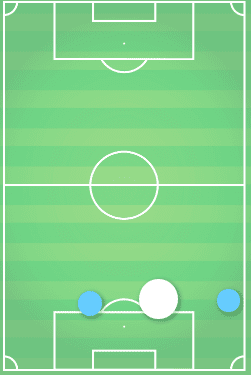
Duverne is a player who is very comfortable in possession and is well-versed in playing successful passes whilst under pressure. On average, he completes roughly 57.14 passes per game with a success rate of 84.68%.
He likes to play risky passes at times and is usually the one for Brest that breaks their opponent’s first line of press with a progressive forward pass to transition his side out of the build-up phase of the attack.
The Frenchman is a very solid defender too and covers the wide areas for his full-back exceptionally well, which can be seen from his heat map below.
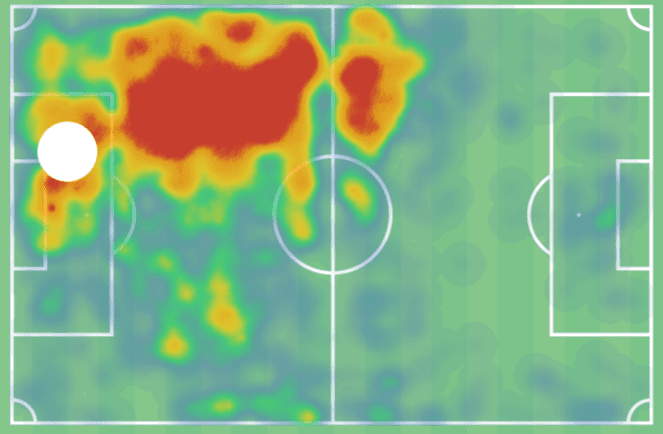
As we can see from this heat map, he spends quite a lot of time out in the wide areas. This is because of his positioning both in and out of possession. Whilst out of possession, he drifts wide to cover the flanks for his absent left-back, and in possession, he pushes wide, allowing the full-backs to venture forward.
If there was one player Duverne is quite similar to in terms of stature and play-style, it would be that of the former Manchester United defender Chris Smalling, currently at Roma.
Comfortable and uncomfortable in possession
As stated in the previous paragraph, Duverne is very comfortable in possession on his right foot. The centre-back loves having the ball and is very adept at receiving the ball under pressure from his opponent.
Brest are not particularly gifted with players who are able to play between the opponent’s defensive lines so, in the first phase of play, they are very conservative and opt for safe passes before attempting to break the opponent’s press. The idea is that they will circulate the ball until a gap opens up for them to play through.
Duverne is the player instructed by his manager to do this. He excels at playing balls through the opposition’s press to bring his side into the next phase of play and to progress them higher up the pitch. An example of this can be seen in the following image.
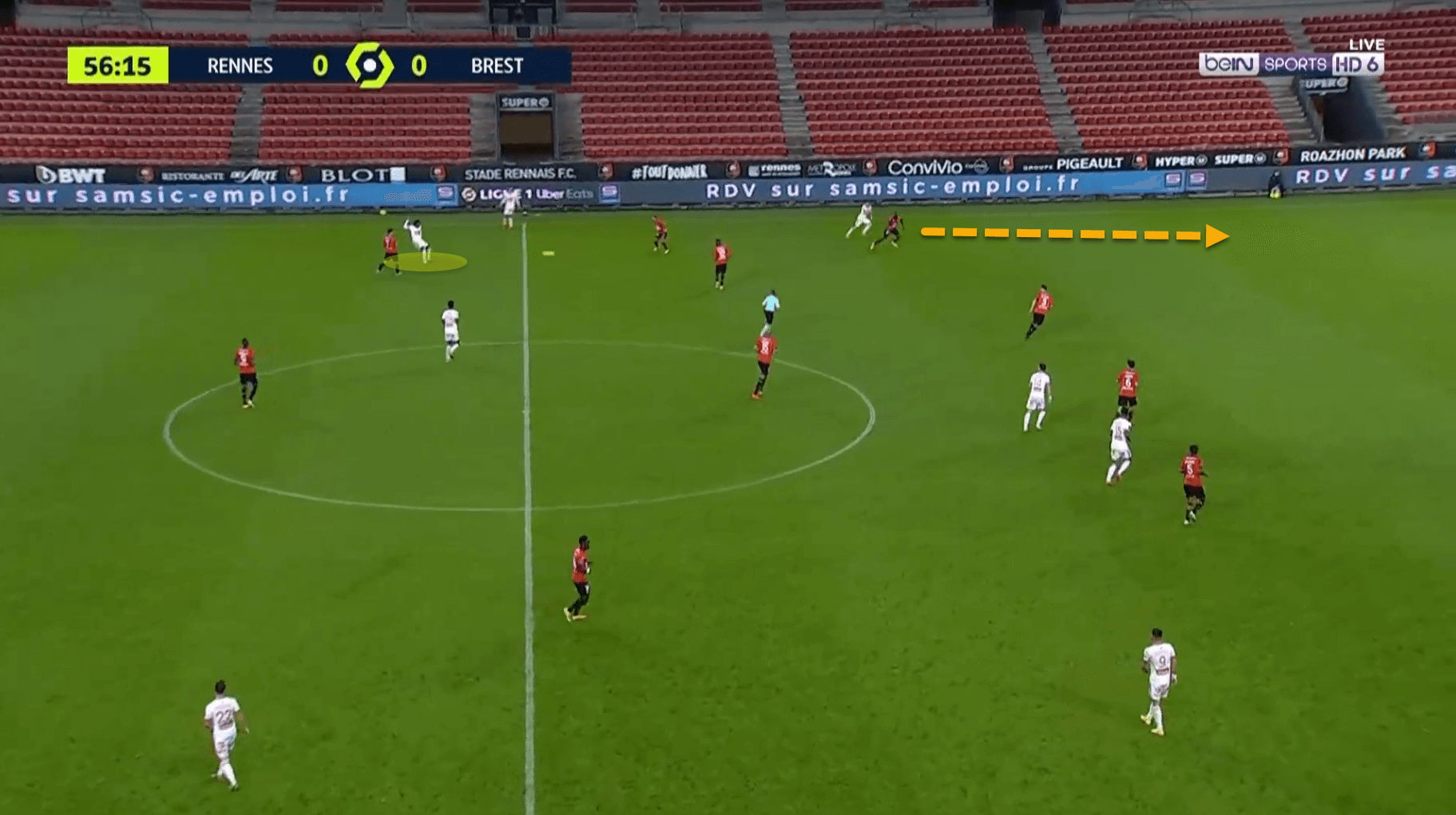
In the still above, we can see an instance where Duverne was under pressure from the Rennes centre-forward to play the ball. He managed to play through the press and progress his side into the final third with a cutting through ball to the winger who made a run in behind.
In Ligue 1 this season, Duverne ranks third for the most amount of progressive passes made by defenders in the league. He currently averages 11.78 progressive passes per 90 for his side in the league, with an average distance of 408.32 metres.
He also ranks tenth in the league for the average number of progressive runs made per 90, with the centre-back averaging 1.59 as of writing, with a progressive run distance of 101.72 metres too. This is because he also likes to venture forward up the left flank and get involved in the play with his full-back and winger higher up the pitch.
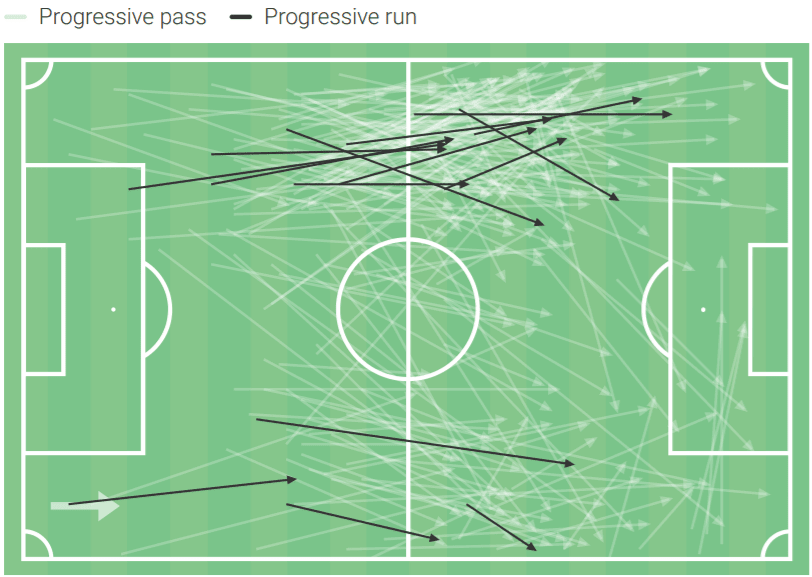
A criticism of Duverne playing at left centre-back though, is that he is only comfortable playing with his right foot. He is not comfortable at playing out from the back with his left foot and so mainly chooses not to open his body out to receive.
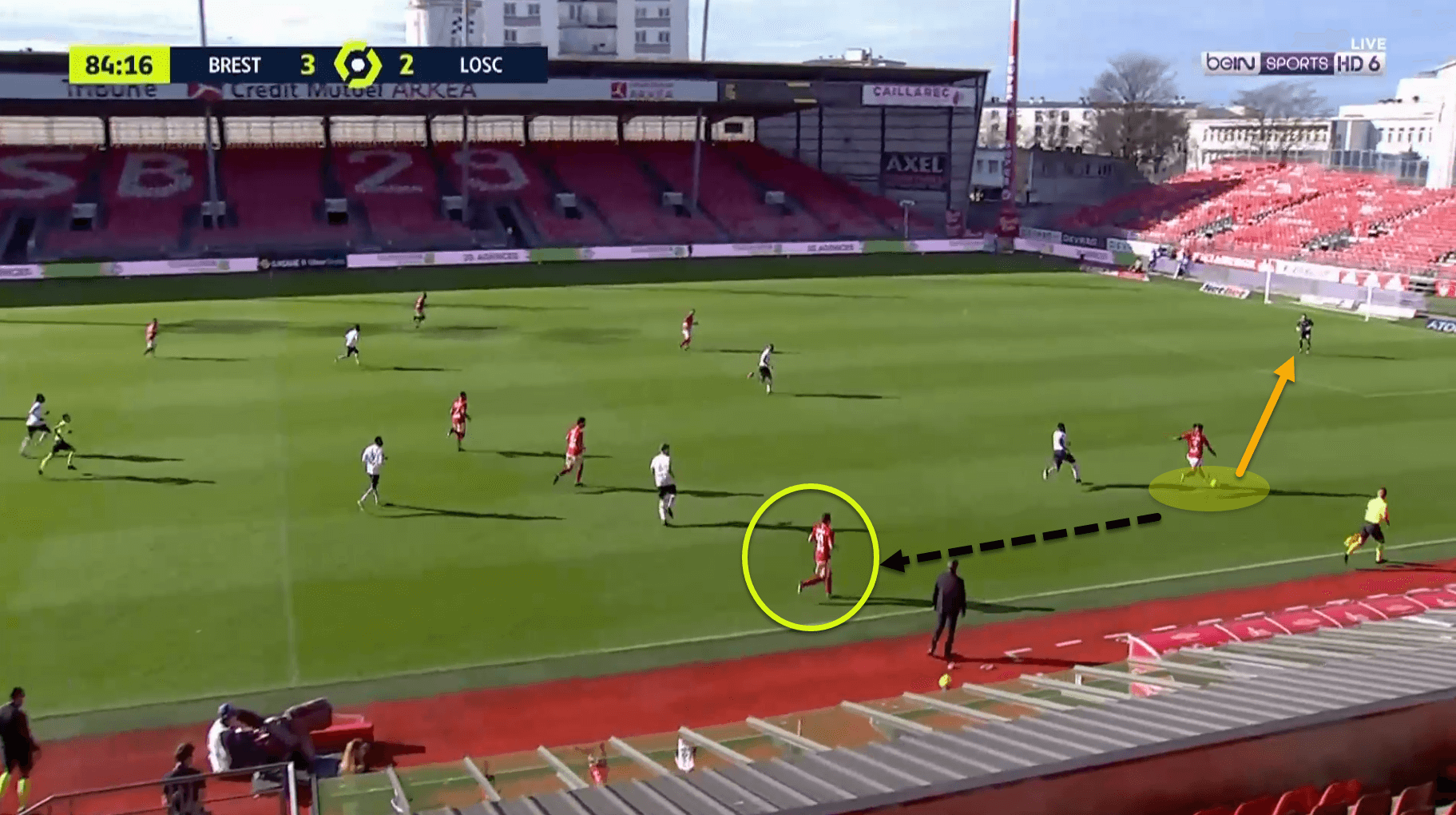
Here, we can see an instance of Duverne being too uncomfortable on his left-foot to open his body out. The Frenchman receives a pass out on the left flank but instead of opening out to play down the line to the left-back who is free, who turns back onto his stronger foot and plays back to the goalkeeper.
Regardless of how adept he is with the ball at his feet, playing as a left-sided centre-back is clearly limiting the 23-year-old by being too safe at times when he really does not need to be.
The opposition can find it quite easy to press Duverne when he has the ball as they can simply angle their run to cut off his access to his right foot, forcing him to play with his left. When this happens, he simply plays long down the flank, which is not always the most efficient way to play forward.
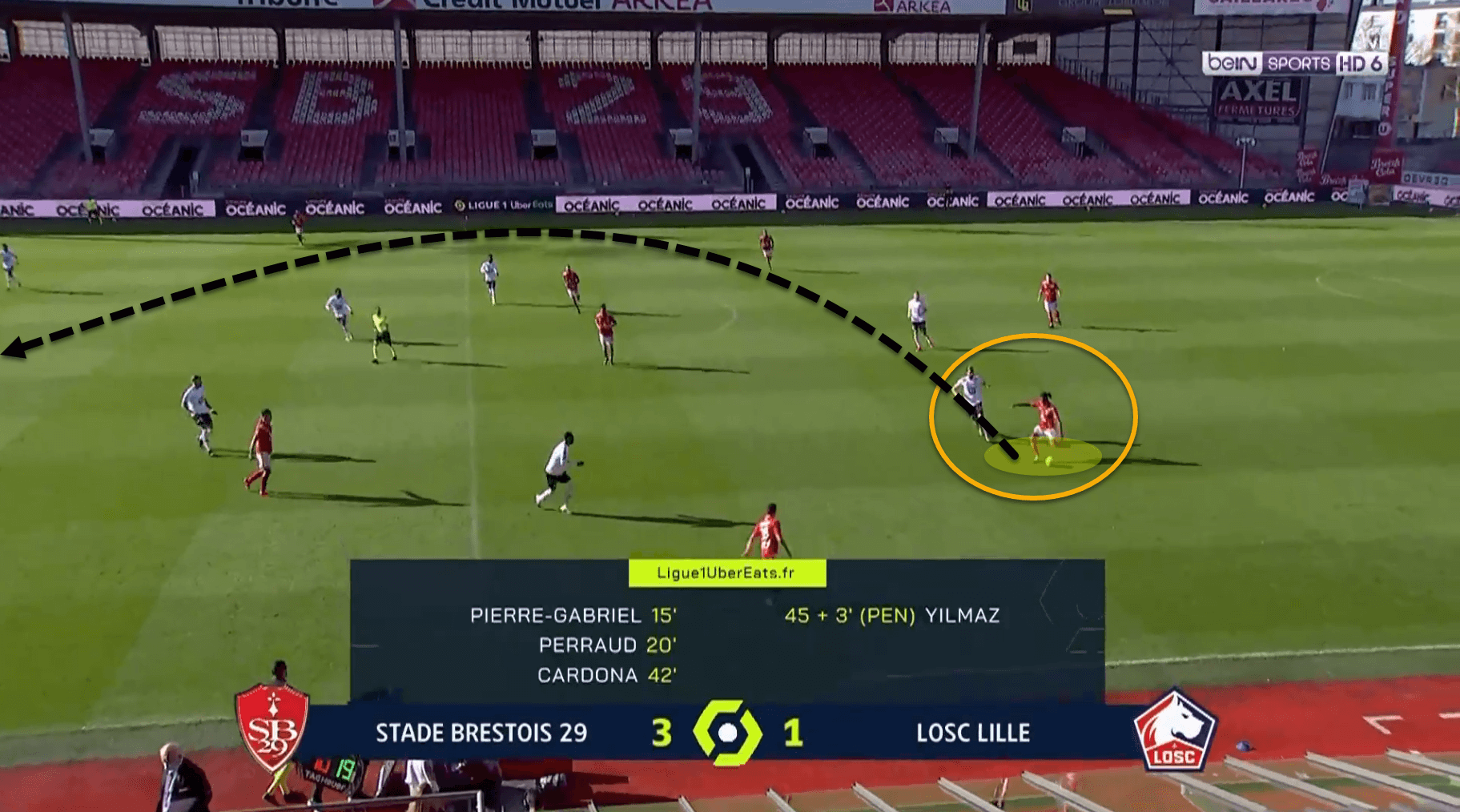
In this image, we can see some intelligent pressing from the opponent to cut off Duverne’s use of his right foot by angling his press, which forces him to play long down the line.
Playing on the right side of a back two would benefit the defender much more as he would be able to play with his right foot down the line.
Tactical intelligence
For such a young defender with a shortage of top-flight experience, one of the most surprising aspects of Duverne’s game is his astute reading of the game from a tactical standpoint.
He is not the quickest or tallest centre-back in the world, however, he makes up for his biological shortcomings with his tactical and positional awareness. The Frenchman seems to be one step ahead of the opposition’s forwards on the pitch and tends to see danger before it even occurs.
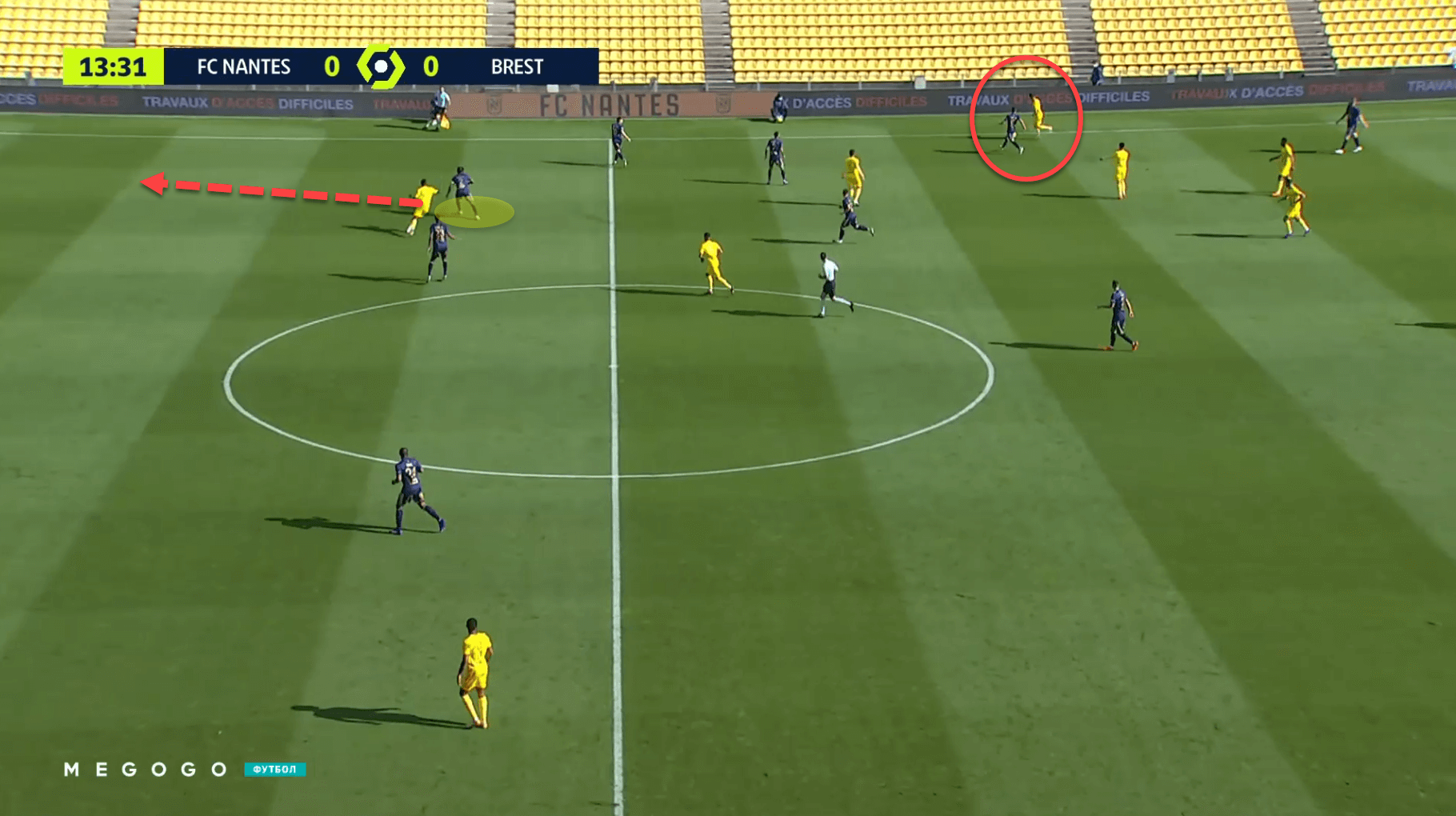
The image above is merely one example of Duverne’s defensive intelligence for Brest. Here, Nantes have the ball on the wing. Before the Nantes player even gets the opportunity to play down the line, Duverne is one step ahead of the rest of his backline and has already started to drop in order to give himself enough space to recover the ball due to his shortage of pace.
So far this season, Duverne averages 10.75 ball recoveries per 90 in the league. He also boasts 4.86 counterpressing recoveries per 90 in the league, which is the fourteenth highest from any defender this season.
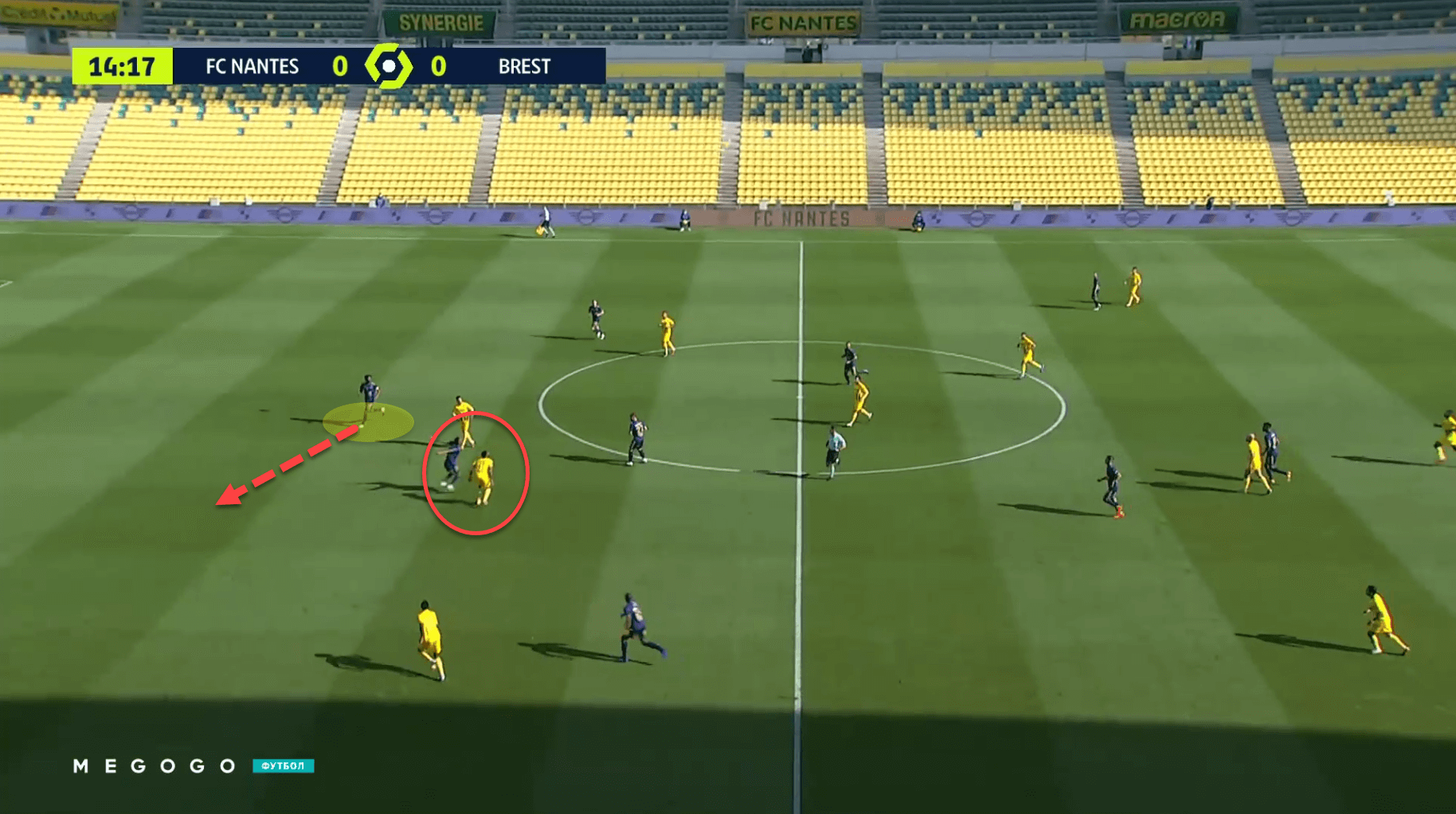
Yet again in this image, we can see Duverne’s intelligent play come in handy for Brest whilst in defence. His defensive partner has pushed up to challenge for a header with the opposing centre-forward and so has left space to be exploited in behind him.
Knowing the danger that a flick on could cause the Brest backline if his partner failed to win the header, Duverne dropped deep in order to win the second ball and to cover the space left by the other centre-back.
With such a fantastic football mind at such a young age, it is scary to think how much better the Frenchman could become with more and more experience playing top-flight football.
Defensive style
In his defensive duels, Duverne is very difficult to get past. As of writing, the centre-back has averaged 6.73 defensive duels per 90 in the league with a success rate of 66.67%, which is an exceptional number considering how much his side are attacked every game.
He is a very physical defender in 1 v 1 duels and, as stated in the previous paragraph, he gives himself plenty of room to catch his opponent considering the defender’s lack of pace. Once he goes 1 v 1 with an opponent who is running in behind the defensive line, he likes to cut them off using his body to either shield the ball or else shoulder them off the ball in order to regain possession.
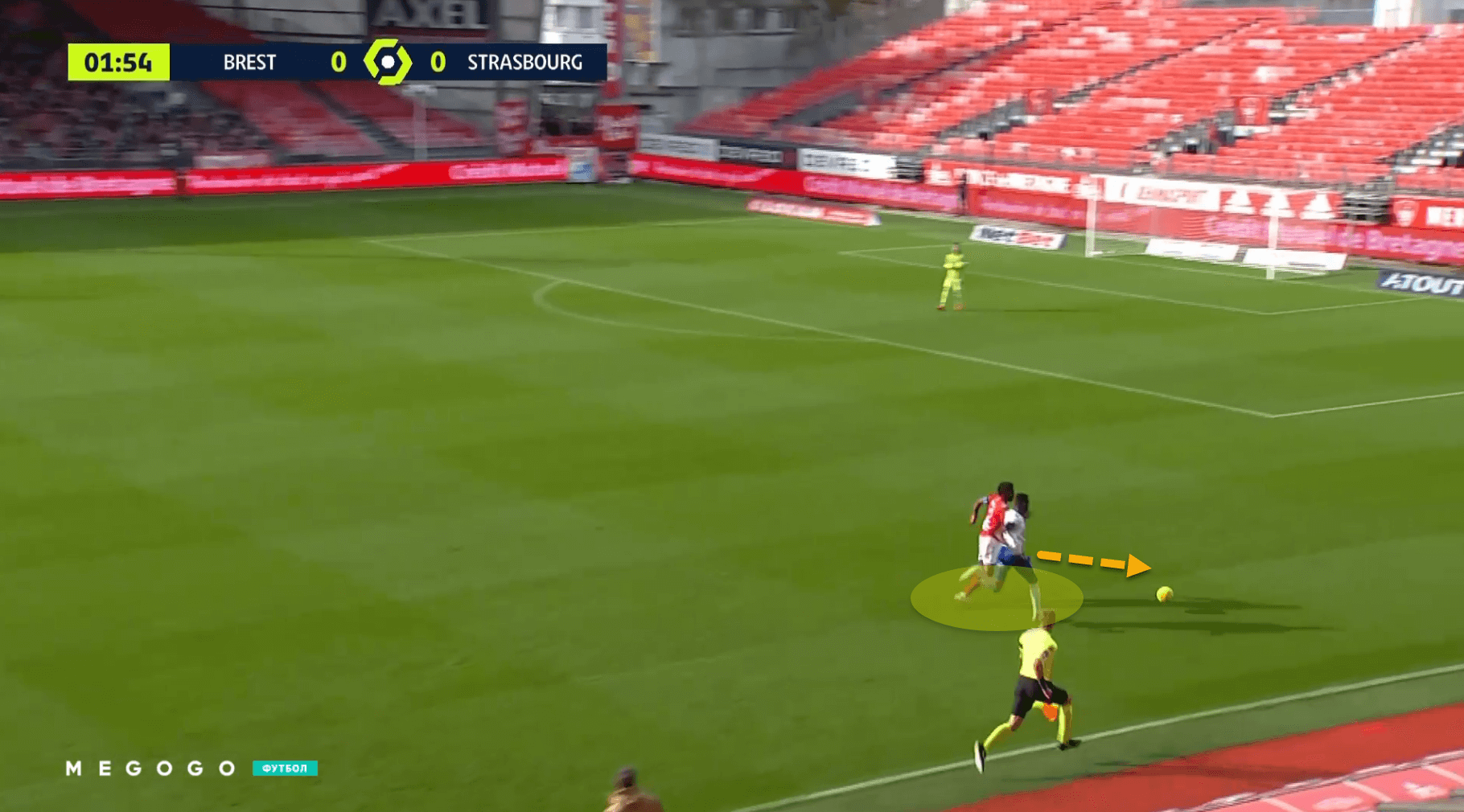
The image above is an example of a typical scenario in which Duverne comes across his runner to block their run by getting in front of the man and shielding the ball, or else using his immense physical power to shoulder the runner off the ball.
Duverne is also brilliant at covering for the ball-near full-back in the wide areas. It is a defender’s duty in modern football to cover for their full-back on the flanks as full-backs and wing-backs get forward nowadays, playing as wingers and so there is always space left to be exploited by the opposition in these wide areas.
Duverne does this job brilliantly well and is able to force his man inside so that he can defend on his right foot, rather than forcing them down the line onto his weaker left foot. This can be seen in the following image.
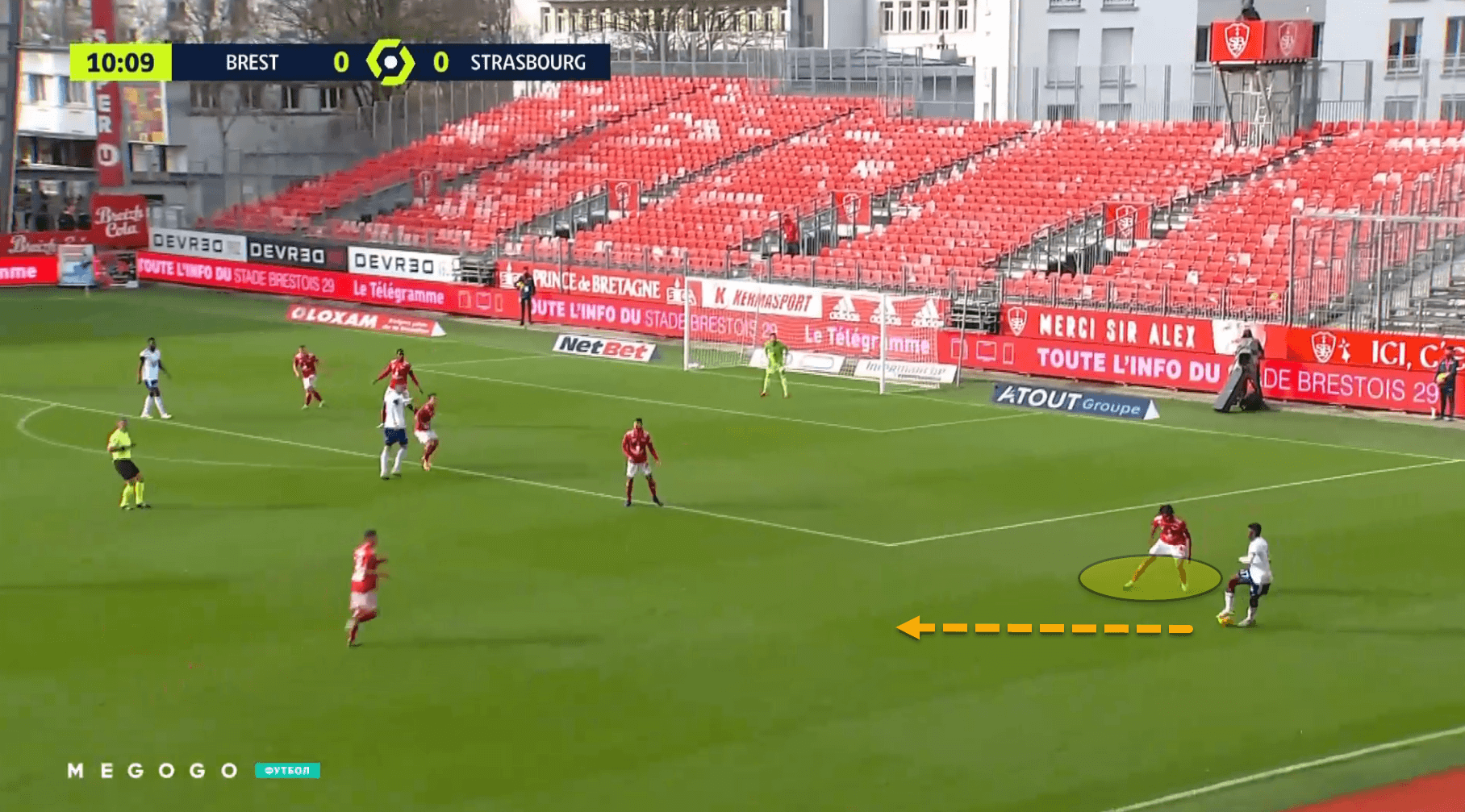
There is space out on the flank for Strasbourg to exploit and so Duverne covers it brilliantly. As we can see above, he is showing his man inside to entice him to run inside rather than take on Duverne down the line. If the Strasbourg player was to take the centre-back on down the line, Duverne would be forced to defend with his left foot.
This, once again, is extremely intelligent defending.
Conclusion
Nobody is perfect, not even the best footballers in the world, so there are weaknesses in his game that can be exploited. Brest play a very high line under Dall’Oglio and since Duverne lacks sufficient pace, his opponents can exploit this weakness with balls over the top, which they have done on several occasions this season.
Brest are also woeful when it comes to defending set-pieces, however, this is more of a collective problem with the side and the coaching staff, as opposed to an individual shortcoming of Duverne.
Regardless, he is still an exceptional talent with serious quality at merely 23 years of age. With a lot more experience under his belt, it would not be at all surprising to see the Frenchman take a step forward in his career and move to a bigger and better club with respect to Brest, and he was even linked with a transfer in the past to a number of top sides, including Liverpool and Celtic.





Comments